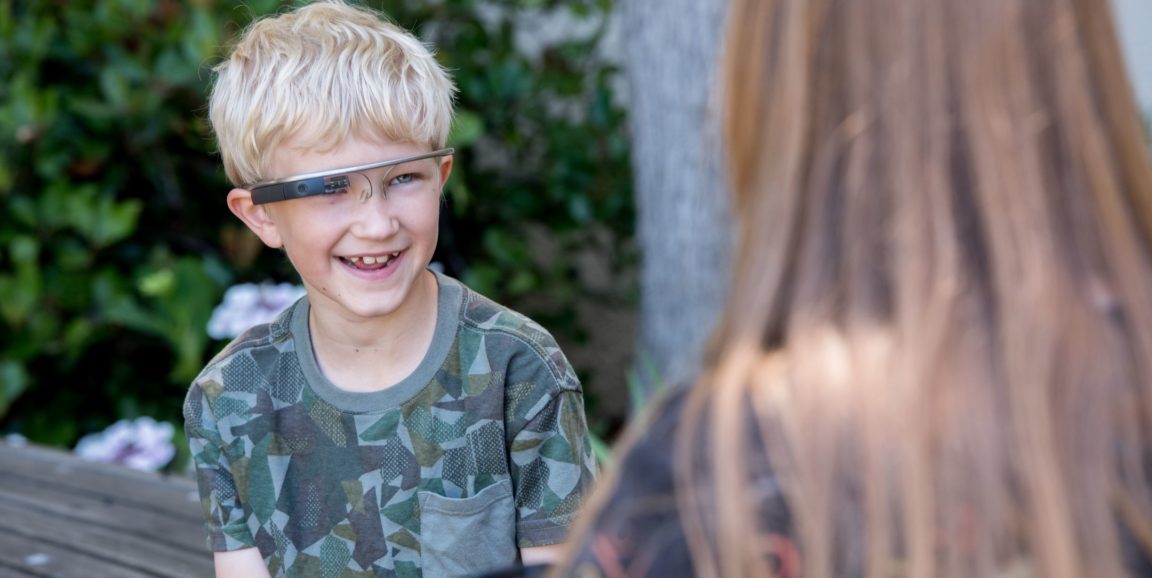Last year, a few weeks after he began participating in a Stanford pilot study of a novel autism treatment, a boy named Alex did something that really surprised his mother.
“He was engaging with my eyes, flickering his eyes to me,” said Donji Cullenbine, mom of Alex, who is now 9. It was a big change for a kid who had always felt anxious about looking at people's faces and had struggled to understand what others might be thinking.
The pilot study, published today in npj Digital Medicine, asked if Google Glass technology could help kids with autism recognize facial expressions. The trial was led by Stanford's Dennis Wall, PhD, who has several projects underway to build technological solutions for autism diagnosis and treatment. Wall’s team devised an app that allows Google Glass to act as an emotion-recognition tutor for children with autism. As our press release explains:
The [Google Glass] device, which was linked with a smartphone through a local wireless network, consists of a glasses-like frame equipped with a camera to record the wearer’s field of view, as well as a small screen and a speaker to give the wearer visual and audio information. As the child interacts with others, the app identifies and names their emotions through the Google Glass speaker or screen. After one to three months of regular use, parents reported that children with autism made more eye contact and related better to others.
The treatment could help fill a major gap in autism care: Right now, because of a shortage of trained therapists, children may wait as long as 18 months after an autism diagnosis to begin receiving treatment.
The app, which recognizes eight basic facial expressions, can be used in three modes: “Free play,” in which the device names the expression of anyone in the wearer’s field of view, and two game modes that provide fun, rewarding ways for children to practice naming the facial expressions. The study included 14 families, each of whom had a child between age 3 and 17 with a clinically confirmed autism diagnosis.
At the end of the study, the children’s scores on a social-skills questionnaire indicated less-severe autism symptoms. Six participants had experienced changes in their scores large enough to move down one step in the severity of their autism classification, and 12 of the participating families reported that their kids made more eye contact. Cullenbine explained how it felt to watch this transformation:
A few weeks into the trial, Alex began to realize that people’s faces hold clues to their feelings. 'He told me, ‘Mommy, I can read minds!’' Cullenbine said. 'My heart sang. I’d like other parents to have the same experience.'
Wall's research team is now completing a larger, randomized trial of the therapy. They also plan to test it in children who have just been diagnosed with autism and are on a waiting list for treatment. The project’s website has more information about their ongoing trials, including contact information for those interested in learning more about participating in the research.
Photo of Alex and his mom using the experimental system by Steve Fisch




